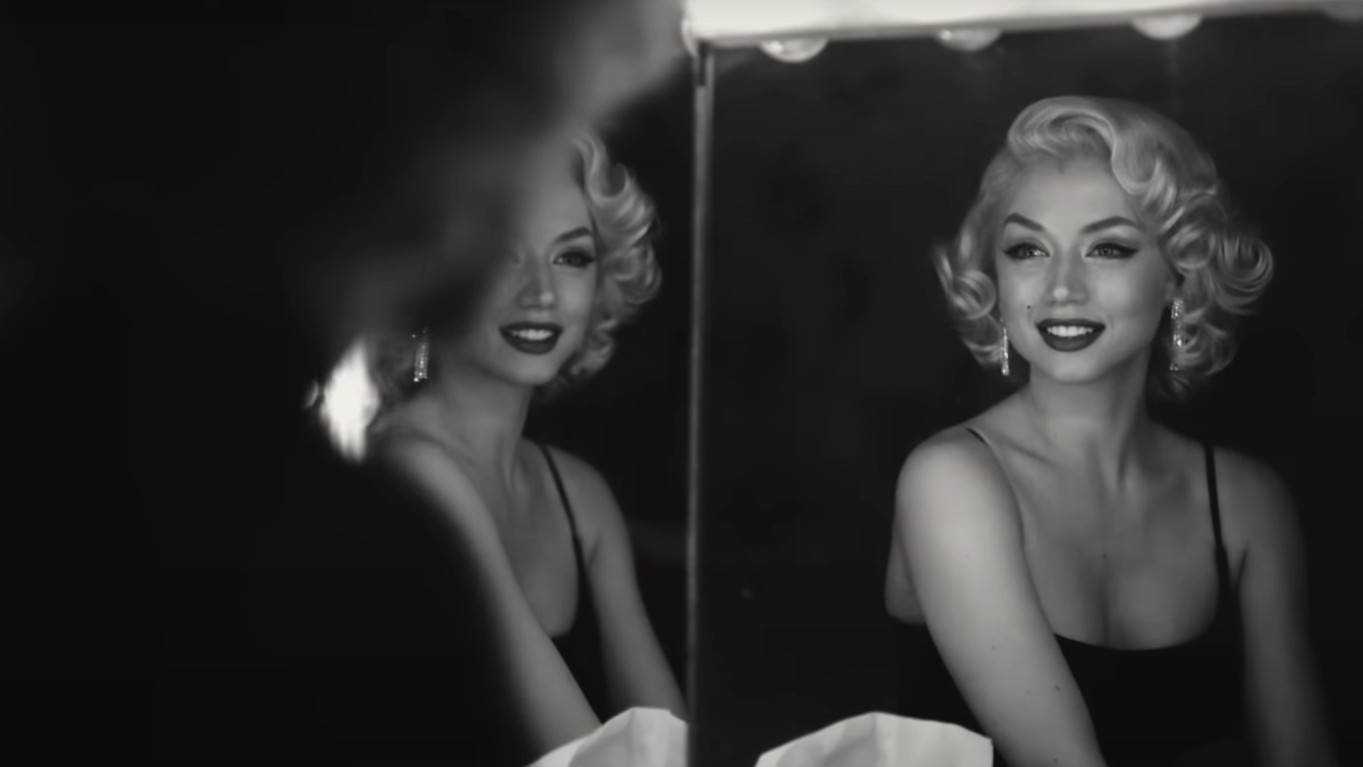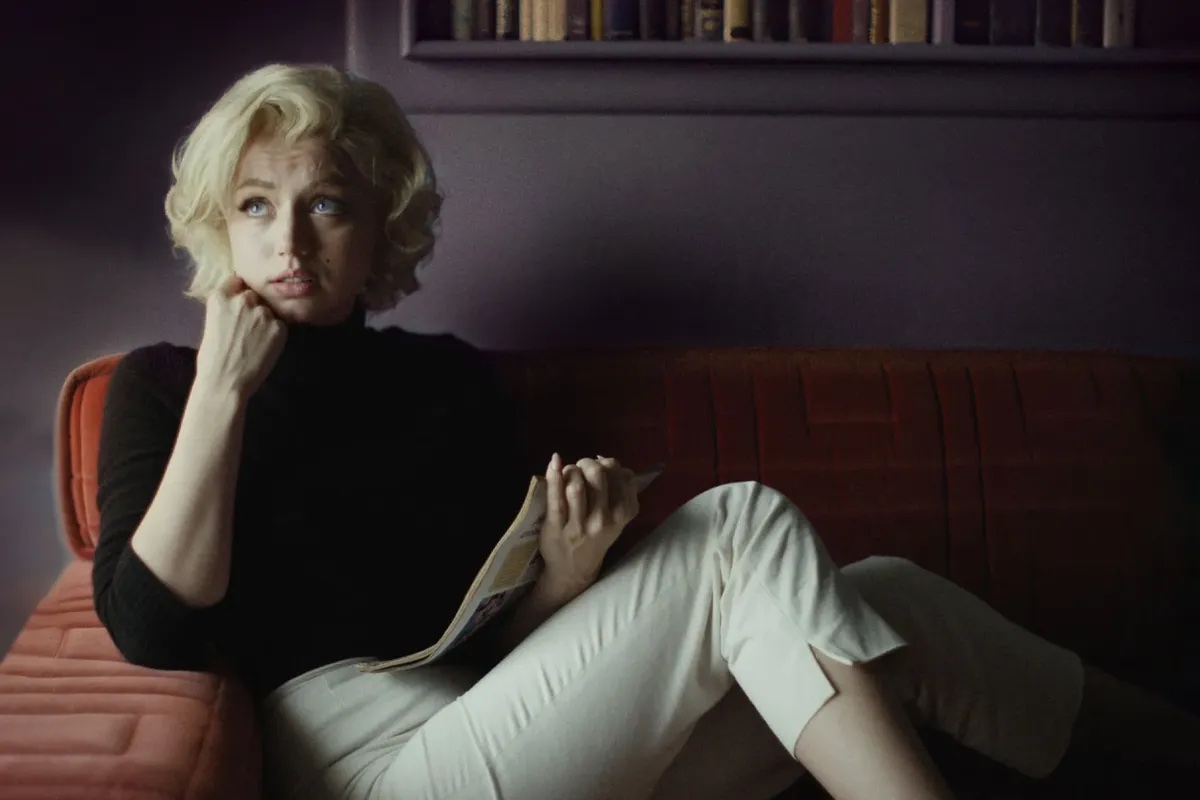News feed
Think of the slowest film you’ve ever sat through, then slow it down even more. That’s the pace of Blonde, the extremely hyped Netflix film loosely based on Marilyn Monroe’s life, starring Ana de Armas.
We had good reason to be excited for Blonde. Ana de Armas’ arresting performance in trailers saw the Cuban actress transformed into Monroe’s exact likeness (a little accent controversy aside) and the material certainly had legs – the film is based on Joyce Carol Oates’ biographical fiction novel of the same name, released to critical acclaim in 2000. It should have been great.
It’s just past mediocre.
Why the film falls flat has a lot to do with the way it was marketed. This is Marilyn Monroe we are talking about – any film about the biggest Hollywood star in history is going to draw audiences beyond the high-brow cinephiles. I am no cinephile. I wanted a story, but most importantly I expected a story. What I got was a cobbled together series of cinematically beautiful scenes that alone, often landed magnificently, but together felt disjointed and clumsy.

We start with young Norma Jean dealing with a troubled childhood. The film had me initially – Julianne Nicholson shines as Jean’s unstable mother, and her slow descent into madness seen through the eyes of a child is done well.
I ended up lost when we jumped to Norma Jean as an adult, navigating the toxicity of Hollywood as a young actress. Routinely underestimated at best, sexually assaulted at worst, Monroe’s Hollywood experience in Blonde mirrors accusations made in the height of the #MeToo era – like many modern-day actresses, Blonde’s Monroe suffers at the hands of powerful men on her road to stardom. This kind of story-building should work – Monroe has always been a tragic Hollywood figure, sexualised by men only to be used and thrown away. Detailing macro and micro-aggressions that lead to her demise is what we all expected this film to be about. But the way this back story is delivered comes via overwrought, arthouse-heavy scenes that feel like they’ve been directed as individual short films, not as a whole.
This isn’t exactly surprising. Blonde was written and directed by Andrew Dominik, the man behind The Assassination Of Jesse James By The Coward Robert Ford, another fiction-based-on-fact film renowned for its snail-like pace. Dominik loves A Scene – beautifully shot, considered moments in film. In my opinion, he loves these to the detriment of the story sometimes.

In Blonde, we jump from black and white to colour. From Golden Age Hollywood glitz to talking foetuses. Yes, talking foetuses. Some of these moments are powerful – a harrowing abortion scene speaks to the level of control women in Hollywood were (and often still are) under, a screening of Gentlemen Prefer Blondes hones in on a distracted Monroe, then pans out to show a sea of beaming faces – perfectly depicting the star’s disconnect from who the world perceives her to be.
Some are bizarre, or feel unnecessarily explicit. There is a point-of-view abortion shot. Lengthy, gratuitous lingering on Monroe’s bloomers during that iconic subway grate dress moment. A lot of nudity, and a lot of sex. Some of these provocative moments work – Blonde’s Monroe is just a body, a vehicle for the many men around her. This hits home when the camera is so fixated on sex. But more often than not the relentless art of this film is its downfall.
That art isn’t just about the scenes themselves, but the sheer length of them. This film is so long. It’s almost three hours of viewing. Yes, this seems to be a trend – Elvis notoriously also stretches for over two-and-a-half hours. There is a lot to cover, but with so many lingering shots and slow-paced scenes, it’s hard to remain focused.
What is magical about Blonde is Ana de Armas’ performance. She is incredible. She is formidable on screen, even up against Bobby Cannavale and Adrien Brody. She has to be up for an Oscar next year or it will be a travesty. She not only embodies everything we hold nostalgic about Marilyn Monroe (the voice, the eternally hopeful expression, the vulnerability), she grabs intense scene after intense scene with both hands and doesn’t let go. She’s completely magnetic, and thank god for that because it felt like her Hollywood trajectory was hinging on this performance. Yes, there are a few falters into her Cuban accent but you won’t leave the film remembering that. You’ll just remember how she did not miss. Not one line, not one expression.

I wish this wasn’t a film about Marilyn Monroe. It really shouldn’t have been about Monroe. Dominik, I believe, would have seen a more well-received film if it were a completely fictional Golden Age actress with some allusions to Monroe, because then we would be focusing on the themes and artistry. The weight of Marilyn Monroe’s mythology is a lot to bear.
Mostly, I feel that Netflix did Dominik dirty with the marketing of this film. Leaning so heavily on de Armas’ likeness to Monroe, the perfectly recreated historical moments, this all had us expecting a slightly fictional biopic that was landing at a time when, thanks to Kim Kardashian’s Met Gala dress moment, Monroe nostalgia is at a peak. Blonde never had a chance.









